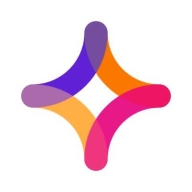

Jitterbit Harmony and Alteryx Designer are competing in the data integration solutions category. Alteryx Designer holds the upper hand due to its advanced analytical capabilities and comprehensive feature set, despite Jitterbit Harmony's competitive pricing and reliable customer support.
Features: Jitterbit Harmony offers an intuitive design and efficient data transformation tools that accommodate various integrations. It boasts a user-friendly interface and errorless logs, making it stable and reliable. Alteryx Designer provides advanced analytics and data blending features, enabling complex data manipulation and insights. Its drag-and-drop interface, coupled with extensive data connectivity and workflow automation, caters to both beginners and advanced users.
Room for Improvement: Jitterbit Harmony could enhance its advanced analytics capabilities and increase support for more data connection possibilities. Its simplicity is beneficial, but expanding feature depth could broaden its appeal. Alteryx Designer might improve by optimizing its initial cost structure for newcomers and reducing complexity in its extensive feature set for easier onboarding. It could also enhance predictive analytics to cover a broader scope of use cases.
Ease of Deployment and Customer Service: Jitterbit Harmony is lauded for rapid deployment and a responsive support team, making it easy for users to get started quickly. Alteryx Designer offers straightforward deployment with robust customer support, ensuring users receive continuous assistance. Its setup process is smooth, but Jitterbit's quicker implementation may be more appealing for time-sensitive projects.
Pricing and ROI: Jitterbit Harmony provides an attractive cost model with quick ROI due to lower setup costs, making it a financially appealing option for businesses with budget constraints. Alteryx Designer requires a higher initial investment but promises substantial long-term returns through its extensive features and capabilities. Its pricing reflects a future-oriented investment strategy, potentially offering higher returns over time.
There are areas where they need to improve response time and overall competence.
It's cheaper than Palantir, but even Alteryx is too much for small clients.
The main valuable aspect is the simplicity of use across all features.
| Product | Market Share (%) |
|---|---|
| Alteryx Designer | 1.8% |
| Jitterbit Harmony | 0.6% |
| Other | 97.6% |


| Company Size | Count |
|---|---|
| Small Business | 12 |
| Midsize Enterprise | 3 |
| Large Enterprise | 17 |
| Company Size | Count |
|---|---|
| Small Business | 8 |
| Midsize Enterprise | 3 |
| Large Enterprise | 1 |
Jitterbit Harmony offers an advanced integration platform that simplifies data transformation, helps users quickly connect apps, and automates workflows, streamlining complex business processes efficiently.
Designed to meet the high demands of modern businesses, Jitterbit Harmony enables seamless integration across cloud and on-premise environments. By leveraging its powerful tools and user-friendly design, users can accelerate innovation, reduce operational costs, and enhance productivity. It bridges the gap between traditional and emerging technologies, ensuring organizations can adapt quickly to market changes and remain competitive.
What are the key features of Jitterbit Harmony?Jitterbit Harmony finds its application across numerous industries, from enhancing data integration in the healthcare sector to optimizing supply chain logistics in manufacturing. It supports financial institutions by improving transaction processing and facilitates real-time data connectivity in retail environments, making it a versatile choice for diverse industries looking to innovate rapidly.
We monitor all Data Integration reviews to prevent fraudulent reviews and keep review quality high. We do not post reviews by company employees or direct competitors. We validate each review for authenticity via cross-reference with LinkedIn, and personal follow-up with the reviewer when necessary.